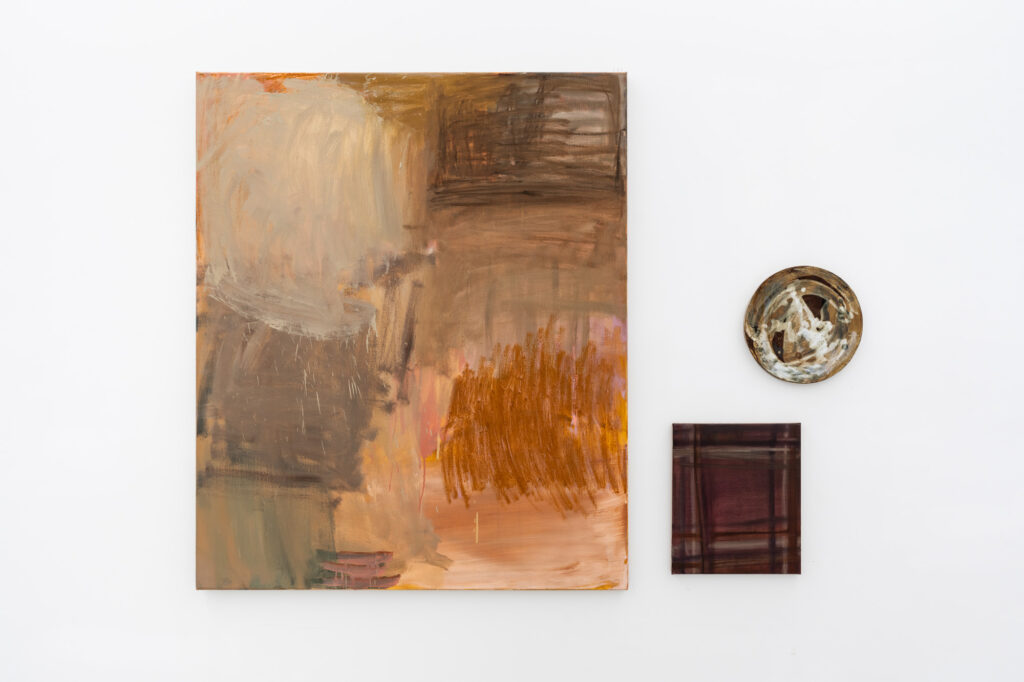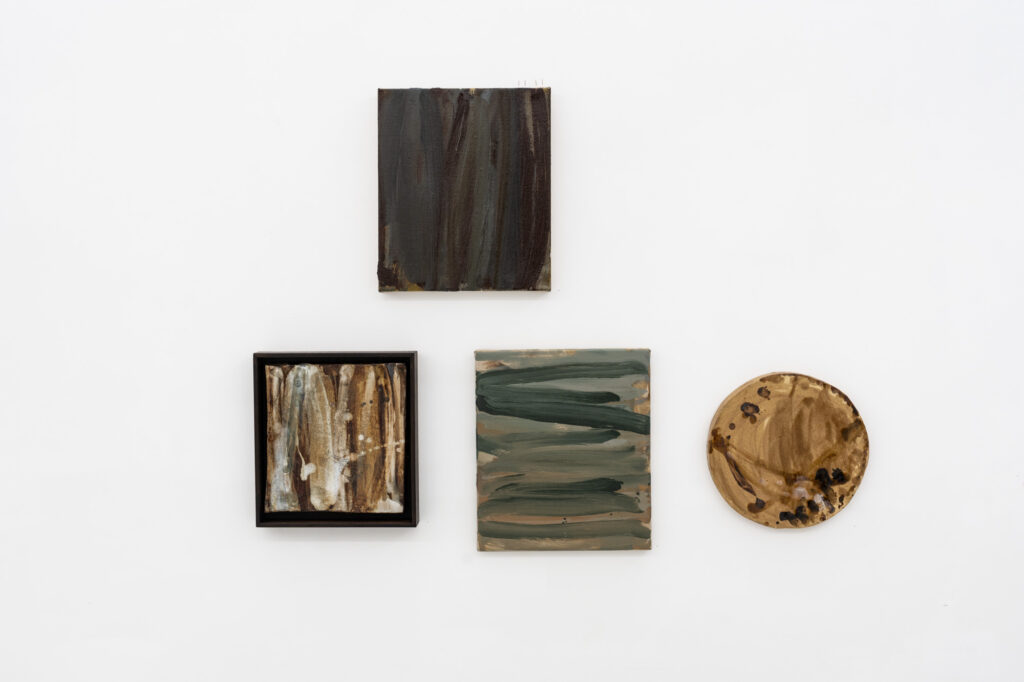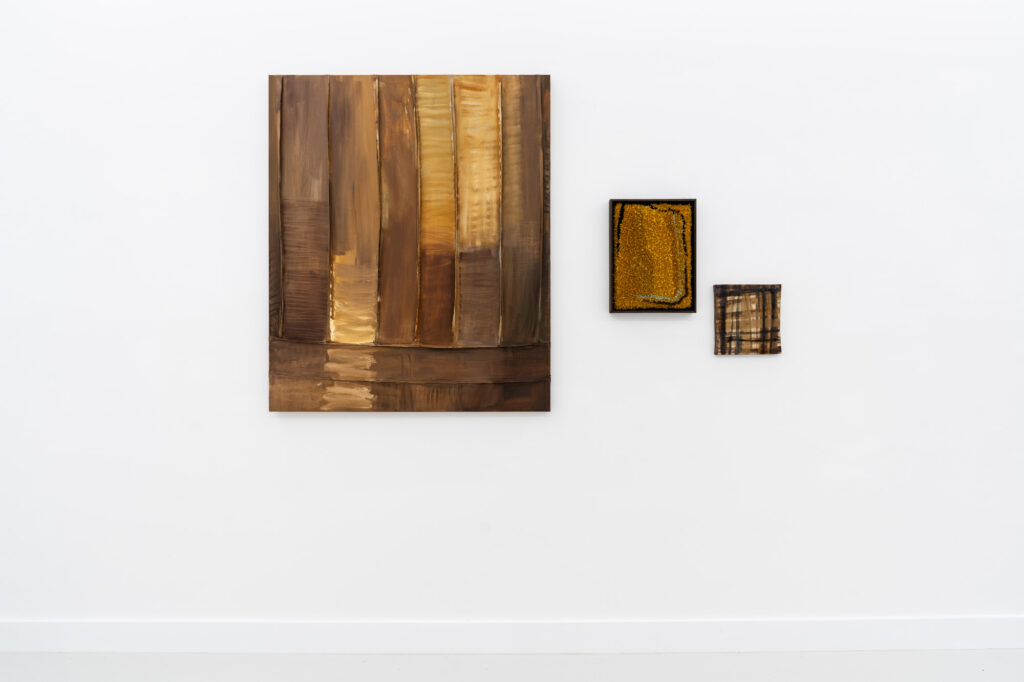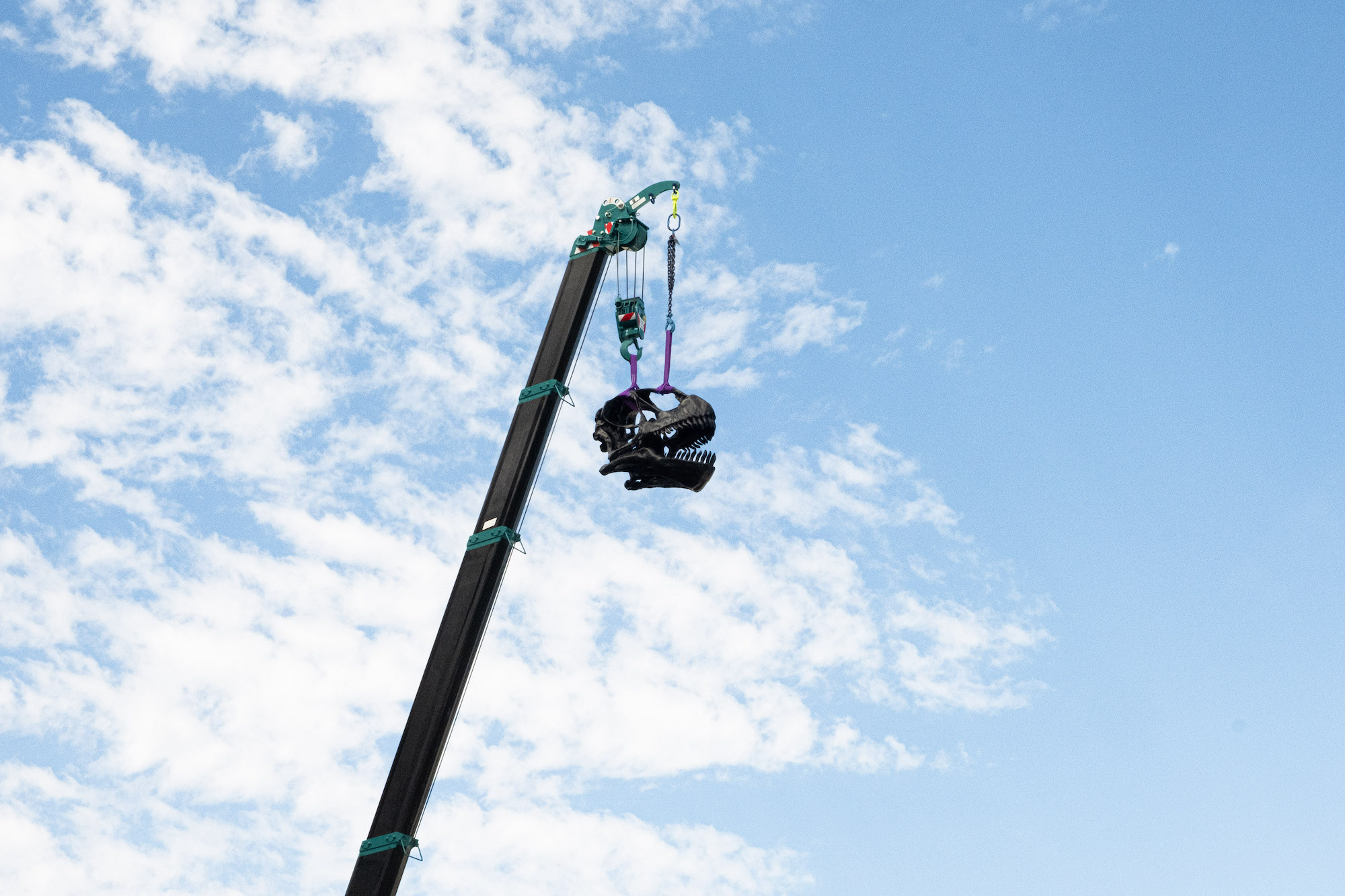
Since graduating from the Queensland College of Art in 2013, Queensland-based artist Bridie Gillman continues to present work nationally and internationally, with Ground Work being her second solo exhibition of the year. Drawing inspiration from the intersection between her childhood in Indonesia, aerial travel across Australia, and recent residency in Portugal, this work signals an expansion of material exploration for Gillman complimenting her fast-growing oeuvre.
Ground Work invites viewers to examine the intricate connections between the ground, senses of place and materiality she has made through an engaging interplay between paintings, ceramics, and tufting. Works within the space are infused with a rich palette of deep earthy browns that evoke the rugged Australian terrain, complemented by muted greens, capturing the essence of bushy grasslands. At the same time, shades reminiscent of granite and sandstone formations vividly come to life against dusty pink and orange hues reflecting the tranquillity of afternoon sunsets. These aerial views, with their unique perspective and patterns, have deeply influenced Gillman’s artistic interpretation of the ground. The intimate scale of the exhibition enhances the contemplative nature of the work, where materiality offers a reflective exploration of how a single concept – ground – can manifest in visually diverse and engaging material interactions.
Gillman’s numbered use of the title ‘Ground Work’ across each piece emphasises the exhibition’s exploratory and study-oriented approach to material and theme. The macro elements of the ground within our landscape transform into micro explorations of materiality and abstraction. Each of these explorations represents a personal and curious inquiry into connections to place that Gillman leads viewers on, unveiling the colours hidden beneath our feet and within the expansive vistas we experience when viewing places from above.
On the central wall, Gillman’s gestural brushstrokes within the large-scale Ground Work 1, evokes the merging, shifting and layering of colours and qualities found within a pink and earthy landscape with dynamic visual interplay of layers, scratched back into the surface. The blurred horizontal and vertical lines throughout the pieces provide an organic and topographical perspective, evoking a sense of stepping into a landscape. Adjacent to this work is Ground Work 15, a small painting consisting of delineated horizontal and vertical layered brushstrokes, using a palette of deep reds and browns resembling the topographical patchwork quilt that are the heavily worked and indelibly changed lands of agriculture. The round, glazed ceramic Ground Work 23, strategically placed at eye height, acts as a window into these places, skilfully playing with flat and textured surfaces and scale to entice the viewer’s eye around these three works. The diverse media used in this section of the exhibition create an intriguing and engaging experience for viewers.

A small collection of ceramics, tufting, and paintings is thoughtfully selected and placed on the opposite wall, reflecting the artist’s expansive approach. From a stretched linen surface containing gestural, creamy and fluid brushstrokes within Ground Work 7, to a small deep brown tuft wool work executed in contrasting bold red and black lines of a similar aesthetic to Ground Work 15, the tufting within Ground Work 19 brings an entirely different material outcome to the mark making explorations of the ground found within the landscape and place. In recent years, textile art has experienced a resurgence, breathing new life into visual art practices. Gillman embraces this revival incorporating tuft wool as a material and narrative that weaves personal and collective histories together. This is an exciting addition to the exhibition as the tuft wool work introduces viewers to a new material outcome for Gillman that combines her personal experience, inspired by time spent in Portugal and a serendipitous find of wool in a second-hand shop in Beaudesert, adding a further personal layer to the exhibition and these material intersections. Positioned in relationship with these two works is Ground Work 20, a ceramic frame that elegantly and organically encases a painted oil on linen, alongside a wooden frame containing four small ceramic glazed surfaces, further exploring materiality while reflecting the layers and colours within the ground. These four works of varied textures invite viewers to engage with the tactile nature of the pieces and highlight how the choice of medium can alter the perception of artworks operating under the same core theme.

Another large-scale work, Ground Work 17, transforms the familiar form and qualities typically prescribed to painting, inviting closer inspection and observation of the textures and nuances present within the linen substrate. The scratched and stitched surface, along with the folds generated within the linen, evokes the undulating contours of the ground and the varying tones evoking farming or grazing ground. The work’s stitched horizontal and vertical lines become accentuated through the meticulous stitching process, reminiscent of how one might trawl through the earth, uncovering hidden layers. As they explore the work, viewers may reflect on the tactile experience of the ground itself, deepening their connection to the artwork and the landscape it represents.
Ground Work is a journey of discovery through materials and experiences, encouraging viewers to engage with Gillman’s work’s subtle, nuanced beauty. Gillman seamlessly moves between mediums to best serve her visual and exploratory outcomes. The exhibition showcases the artist’s skill and invites us to look closer and connect more deeply with the ground and places surrounding us.

Emily Parker is an arts worker and early-career artist who researches and creates in Meanjin/Brisbane. She holds a Bachelor of Fine Art and Bachelor of Business from the Queensland College of Art and Design, Griffith University and is currently an honours candidate at QCAD.



